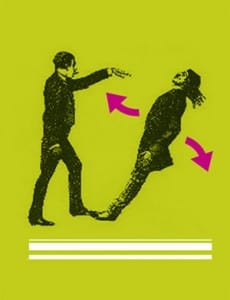The postdramatic is a form of theatre that was first acknowledged by the German Hans Thies Lehmann’s study Postdramatic Theatre (1999). The study highlights how contemporary has moved away from traditions carved by playwright of the well made play and the ”no longer dramatic’ forms of theatre that have emerged since the 1970s’ (Jurs-Munby, 2006, p.1).
Within the brackets of the first paragraph i have already highlighted a very significant point. Lehmann wrote his study back in 1999 in Germany where these conversations had already been flourishing for several years. it was not until 7 years later that Routledge published an English translation of the book suggesting that the use of this term has one again seen the UK dramatically fall behind the continent.
Although new forms are being experimented with, despite the suggestion of the word, the prefix ‘post’ does not actually mean a total disregard for dramatic forms. Jurs-Munby in her introduction outlines that post is used ‘rather as a rupture and a beyond that continue to entertain relationships with drama’ (2006, p.2).
A contemporary postdramatic example, however debated, is Tim Crouch. Crouch fell out of love with acting and the theatre industry and after writing several productions for children found himself producing work of a very distinctive nature. Crouch in his work demonstrates ‘ that the theatre space – together with the performance of written dialogue spoken within it – had transformational possibilities’ (Bottoms, 2009, p. 65). in his opinion the theatre should be used to create illusion rather then depicting a late 19th century Norwegian house as an Ibsen would. A seminal text of Crouch is An Oak Tree. In performances of An Oak Tree Crouch would use an actor who had never seen the script before and feed them instructions, more often then not, audible to the audience. But Crouch’s disobedience to theatrical norms do not end there with the actor. In stead of having an oak tree on stage he uses a chair. Instead of using characters he uses chairs. Crouch ask the audience not to suspend their disbelief but rather ask them to deal with the several layers of theatricality that he provides them throughout the play.

Despite all these rebellions and forms, Crouch still tells a story. It’s is a very clear and dramatic on of that : ‘a grieving father deals with the loss of his teenage daughter in a traffic accident by claiming to have turned the substance of a tree (located roadside at the accident site) into that of his daughter’ (Bottoms, 2009, p.65). As well as this he creates his own cosmos that himself and his fellow actor are stuck in and emotions are shown and a sense is catharsis is felt. He creates both a fictive cosmos (as in a drama) as well as an allowance for other externalities, such as the audience and the performance space, to enter and exit throughout the play. For me this is where Crouch truly establishes himself as a postdramatic artist.
Works Cited
Bottoms, S. (2009) Authorising the Audience: the Conceptual Drama of Tim Crouch. Performance Research, 14 (1) 65-76.
Jurs-Munby, K. (2006) Introduction in Postdramatic Theatre. London: Routledge.